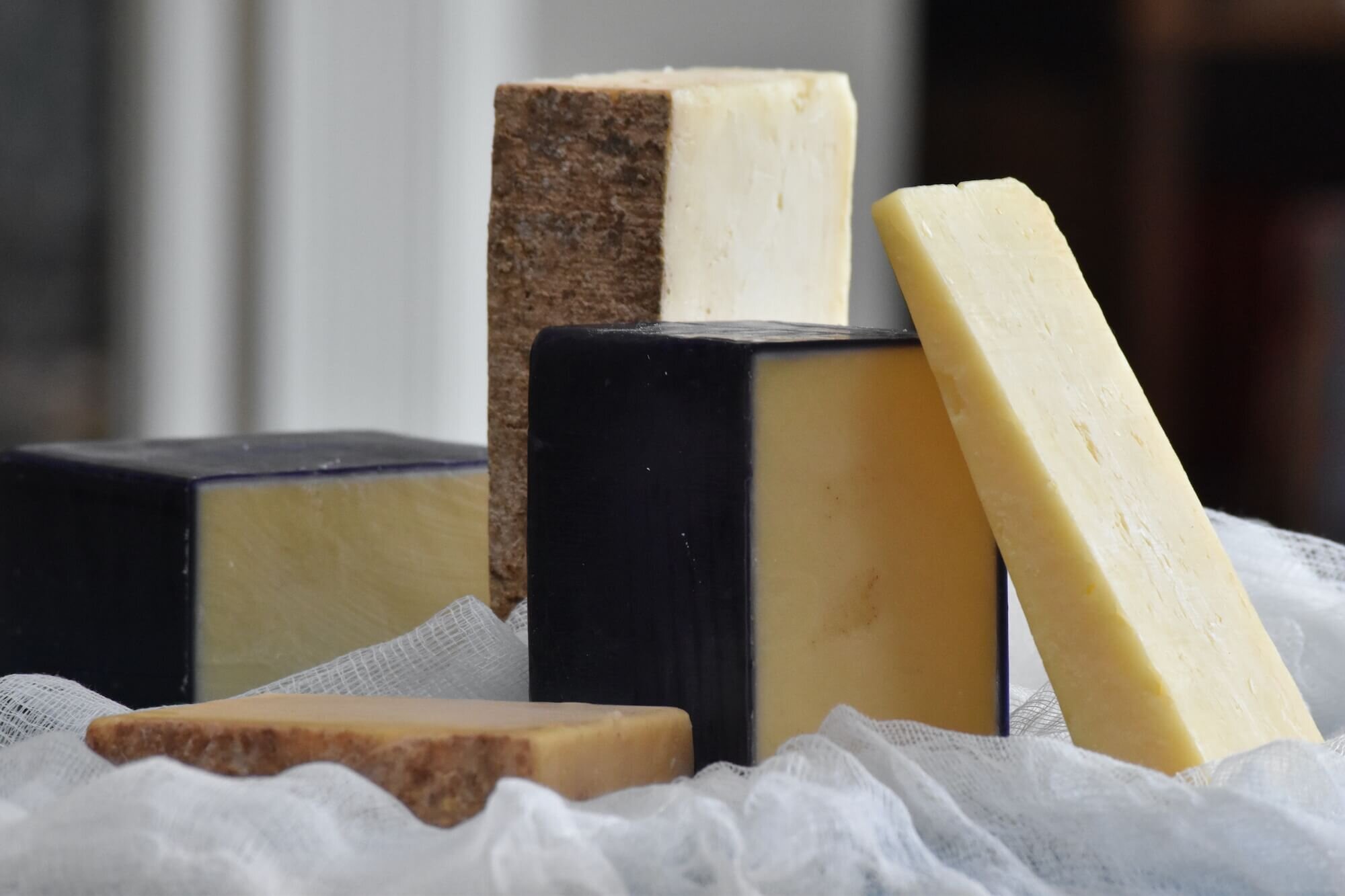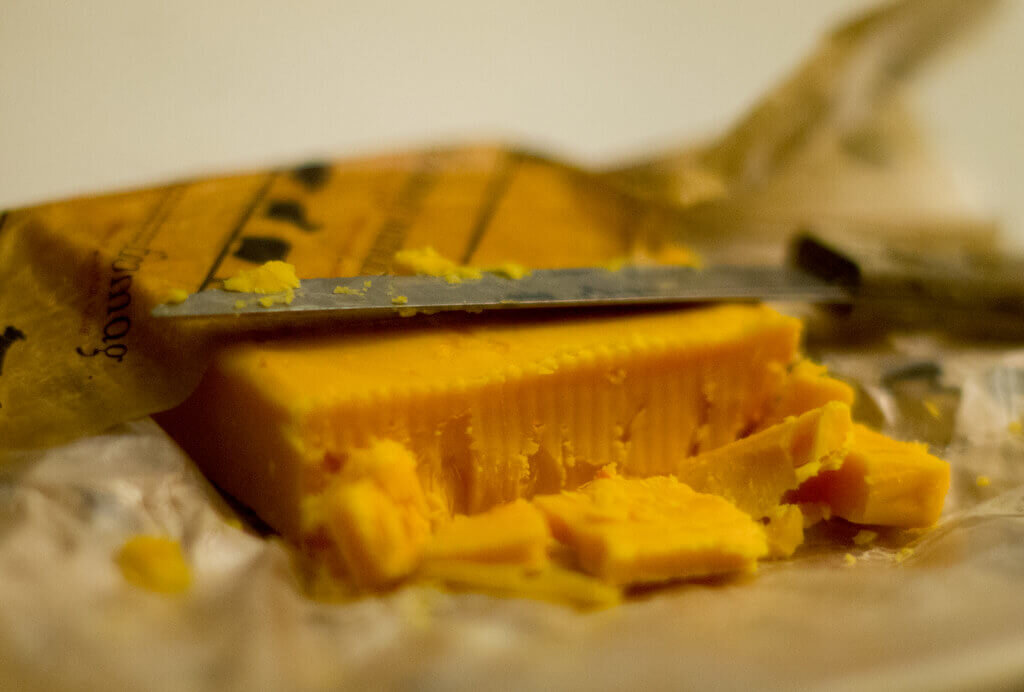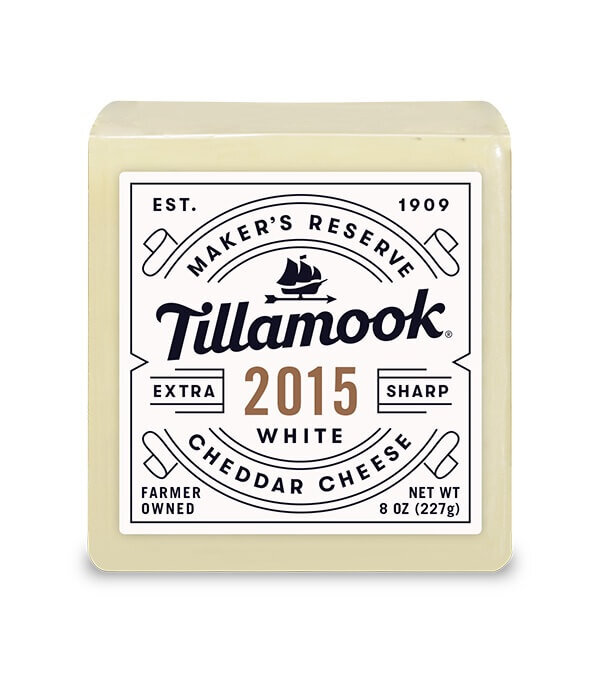A Cheesemonger's Guide to Choosing & Enjoying 4 Styles of Cheddar Cheese
I am hopeful that if you read my recent piece about the online tasting program Understanding Cheddar Better, you have been inspired to buy and try some really great Cheddars. While Cheddar might be America’s every-day cheese (and commonplace in the UK as well as in far-flung parts of the British Empire) it should not be dismissed as uninteresting. If the Cheddar you are eating is boring, you are NOT buying the right Cheddar.
The Diversity of Cheddar
I work at Potash Markets, a grocery store chain in Chicago, and I am proud of what our stores offer in all departments. That said, if you want a serious Cheddar for anything more than a burger or mac and cheese, you should NOT buy Cheddar from the deli loaves or the shingle packs next to the milk. Apologies to our deli and dairy managers, but you will find higher quality, a wider variety of cheese, and expert service at a specialty store or at a supermarket like ours that has a dedicated specialty cheese buyer who can guide your selections.
When you include cheeses that have been smoked, Cheddars made from other milk (most are made from cow’s milk), Cheddars studded and laced with everything from pink peppercorns to blueberries to dark roasted beer, and even some Cheddars with streaks of blue mold, there is a vast array of Cheddar cheeses on the market these days. I just counted 15 different Cheddars in our case, where we have about 80 different cheeses. I will rotate in another 10 or 12 throughout a given 12-month period.
The cheeses included in the July 1 program hosted by Jasper Hill Creamery, (as well as my substitutes mentioned in the previous article) do a decent job of representing the various spheres of Cheddar. Setting aside those with extraordinary treatments, in my mind, there are now at least four major types of Cheddar. I try to keep at least a couple of them available to customers at all times.
British/British-style Clothbound Cheddar
These include those shipped from the UK to the US by Neal’s Yard Dairy, of London, and those made here, by cheesemakers like those at Jasper Hill who have learned how to produce their own riffs on Brit-style clothbound Cheddars here in the States. They are made by wrapping young cheeses in linen, and smearing them with lard. This semi-permeable rind results in complex flavors (spicy, earthy, sweet) and varying textures that can be flinty and crumbly, but turn creamy and soft in your mouth. There is complexity of flavor and variety of flavor and textures from farm to farm, from batch to batch, and even throughout each wheel. I have carried examples from Vermont, Wisconsin, California and Prince Edward Island, Canada. I LOVE these cheeses, having first tasted Keen’s Cheddar from Neal’s Yard more than 20-years ago. It was I am sure, my first real cheese epiphany. That said, I must admit that clothbound Cheddar remains a difficult sell for me, and I believe I am not alone among my cheese-selling peers. I remain hopeful however that there will always be enough consumer interest to maintain this wonderful cheese tradition. There are plenty of factory-made cheeses in the UK as well, of varying quality, but they have more in common with factory made Cheddars elsewhere than they do with their farm-made neighbors. No matter where they are made, clothbound Cheddars have certain similarities or texture and flavor, and yet each has its own characteristics.
Vermont Cheddar
Vermont Cheddar is sometimes described as bitter. I call it savory and blunt. It doesn’t have the long, sweet finish you find in a Cheddar made in Wisconsin, and many made elsewhere in the U.S. But like those cheeses, it can be made by hand or in a highly automated cheese plant, and is usually matured while wrapped in plastic, maintaining much more moisture than a cloth-bound (aka bandage-wrapped) Cheddar. At Potash we currently carry a smoked Cheddar from Shelburne Farms, and a 2-year Cheddar and Truffle Cheddar from Grafton Village Cheese, along with other occasional visitors from Vermont.
"Hook's 15 Year Cheddar" by patrickkuhl is licensed under CC BY 2.0
Wisconsin Cheddar
At Potash, we have sold tons of Hook’s 5-year, Widmer 2-year and Carr Valley 6-year Cheddars, in the six years since our artisan cheese program was developed. We have several others in rotation. Wisconsin Cheddars are often, but not always, colored with annatto (which has no effect on the flavor of the cheese). But I am under the impression that there is something in the milk, (but more likely in the cultures used) that give Wisconsin cheeses a sweet finish after an acidic sharpness, and that is a flavor profile that is widely emulated (or simply similar) in much of the quality Cheddar made in other parts of the US. We also sometimes carry super-aged Cheddars, reaching 8, 10, or 12 years in age. Hook’s occasionally releases a 20-year cheese. To me, these are almost a sub-set in that their texture becomes gritty and or fudge-like and their flavor gains intensity that’s two to three times as assertive as a 1- or 2-year old cheese.
Steckler cheddar photo credit Jay Hamlin
Newfangled American Cheddar
The use of Helviticus adjunct starter culture in combination with traditional Cheddar cultures is a relatively new practice that can, in effect, bring about some of the characteristics of a longer-aged cheese. One of the best-loved examples of this is a cheese made in Iowa called Prairie Breeze, and we carry it at our stores regularly, while occasionally rotating in other similar Cheddars. These cheeses have a noticeably sweeter flavor profile along with a pronounced crunch. While there is some concern that these types of cheeses are altering the definition of Cheddar, and perhaps robbing attention from more traditional Cheddar cheese, there is no arguing the fact that consumers love them. I have also tasted and sold a remarkable 3-year Cheddar called Steckler Bright Meadow, made at a farmstead family creamery in Southern Indiana. The cheese is made with raw milk from 100% grass-fed Dutch Belt breed cows. Bright Meadow is certified organic, loaded with crunchy crystals, and has zesty citrus acidity and sweetness. Whether or not the Helviticus culture plays a role in this cheese, I do not know, but if you like Prairie Breeze you may love Bright Meadow.
There are numerous Cheddar makers elsewhere, participating in both artisan and factory production. New York State has a long history of Cheddar making, and in Oregon, Tillamook Cheese is one of the largest, cheesemakers in the country, with a fascinating history and one of the most successful brands anywhere.
So, if you were to select one of two examples of each of these Cheddar types, you could easily assemble at least seven outstanding Cheddars for a cheese plate. Not one of them would be like the pedestrian, rubbery cheeses that have given Cheddar an undeserved reputation as a milquetoast cheese. Throw in a few of the more novel cheddars with chipotle or ghost peppers, or maple infusions, and you will be in your way to hosting your own CheddarFest ’21. Sign me up! As far as those Cheddars with inclusions (as they are called in the ice cream business), ask your cheesemonger to sample some for you, and let the flavor be your guide. Whatever the additional flavor enhancement is, it should be just that, something that adds to and complements the milky, lemony, or bitter flavors of the cheese, and not something that obliterates them.
What about the accoutrements?
Many classic cheese accouterments go well with Cheddar, in particular, nuts, dried fruit, fruit preserves, pickles, Branston pickle, chutneys, fresh apples, and all kinds of cured meats. Midwesterners love crackers for Cheddars. A crusty baguette with English Cheddars and chutney makes for a fine ploughman’s lunch. While various Cheddars can pair well with numerous wines, ciders and beers might be more reflective of the places where Cheddar is king. Personally, I like a well-aged Wisconsin cheese with an outstanding classic American IPA or Pale Ale, like Bell’s Two Hearted or Sierra Nevada Pale Ale. If you are in England, you would be remiss if you did not enjoy an English Farmhouse Cheddar with an authentic, cask-conditioned English Ale. I once had a chance to do just so after visiting the Neal’s Yard Borough Market location, in London, and trotting around the corner to a Victorian-era pub for a hand-pumped pint of real ale to go with the cheese.
I hope you now have the idea that Cheddar is as noble a cheese as a Brie or Gruyere. Go forth and enjoy it with gusto!







